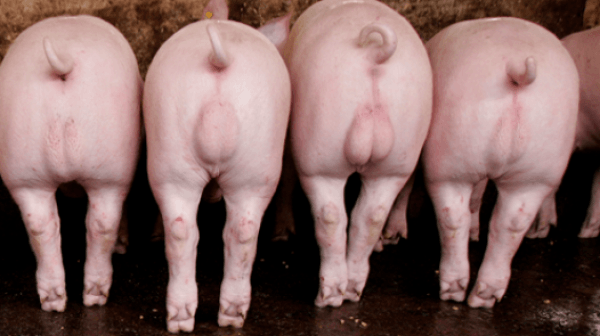As a result of the increasing focus on animal welfare, the European pig sector committed itself ten years ago to stop the surgical castration of male piglets, provided it was practically and economically feasible. Two promising alternatives are keeping intact boars and immunocastration. With intact boars, there is a certain risk of noticeable boar taint in some carcasses: an unpleasant odour/taste in pork fat and meat. Some time ago, Dr Evert Heyrman completed his doctoral thesis on the theme "Company-specific strategies for the reduction of boar taint". Below are some interesting findings from his work.
[written by: L. Levrouw]
In 2010, the EU member states agreed to stop surgical castration as of 2018 and to switch to pain-free, alternative systems. The Netherlands, Denmark, Spain and the United Kingdom quickly and resolutely opted for keeping intact boars. Flanders did not do this and was the only region in Europe to start immunocastration. Nevertheless, in 2017 more than half of Belgian piglets were castrated without pain relief or anaesthesia... In a legal sense, castration without anaesthesia remains possible up to the age of 7 days, but this is going to change.
Housing
The number of animals per pen and the available surface area per pig had no significant effect on boar taint formation in this study. Previous studies have shown that lower pen density is often associated with less aggressive behaviour and also with less boar taint. All farms that participated in Dr Heyrman's study had a minimum of distraction and enrichment material in the pens. This may explain why the higher pen density in this study did not contribute to the incidence of more boar taint.
This study did not find a significant association between barn hygiene/additional cleaning and boar taint formation. There was also no association with the housing of bears on partial versus fully slatted floors. Only the width of the slats had an effect: more problems with boar taint were observed in animals on slatted floors with thinner slats. Older studies showed more problems with solid concrete floors - perhaps due to additional accumulation of and contamination with manure. However, this type of housing did not occur on the participating pig farms in this study.
Some studies suggest that ventilation may also play a role (in combination with temperature & relative humidity). In Dr Heyrman's research, Heyrman was, however, unable to establish a relationship with the type of ventilation.
Carcass composition & genetics
Previous studies reported more boar taint problems in fatty carcasses. The genetic trend towards finisher pig types with a higher lean meat percentage therefore means less chance of boar taint. Heyrman's research also confirmed this.
A relationship with carcass weight (in this case, examined between 83 and 107 kg) could not be demonstrated in this study. Delivering the finisher pigs a little earlier will therefore have little or no effect under the current working method.
The higher the slaughter age, the greater the risk of boar taint. Finisher pig types with a high daily growth are therefore slightly less likely to develop boar taint (related to pubertal behaviour).
In this study, no unambiguous effect could be demonstrated of the type of sow and boar line on the prevalence of boar taint, despite the considerable differences in zootechnical results (growth & feed conversion). Breeding organizations (e.g. Topigs Norsvin) previously reported that over the past ten years, they have been able to reduce the share of boar taint by more than 50% through genetic selection.


